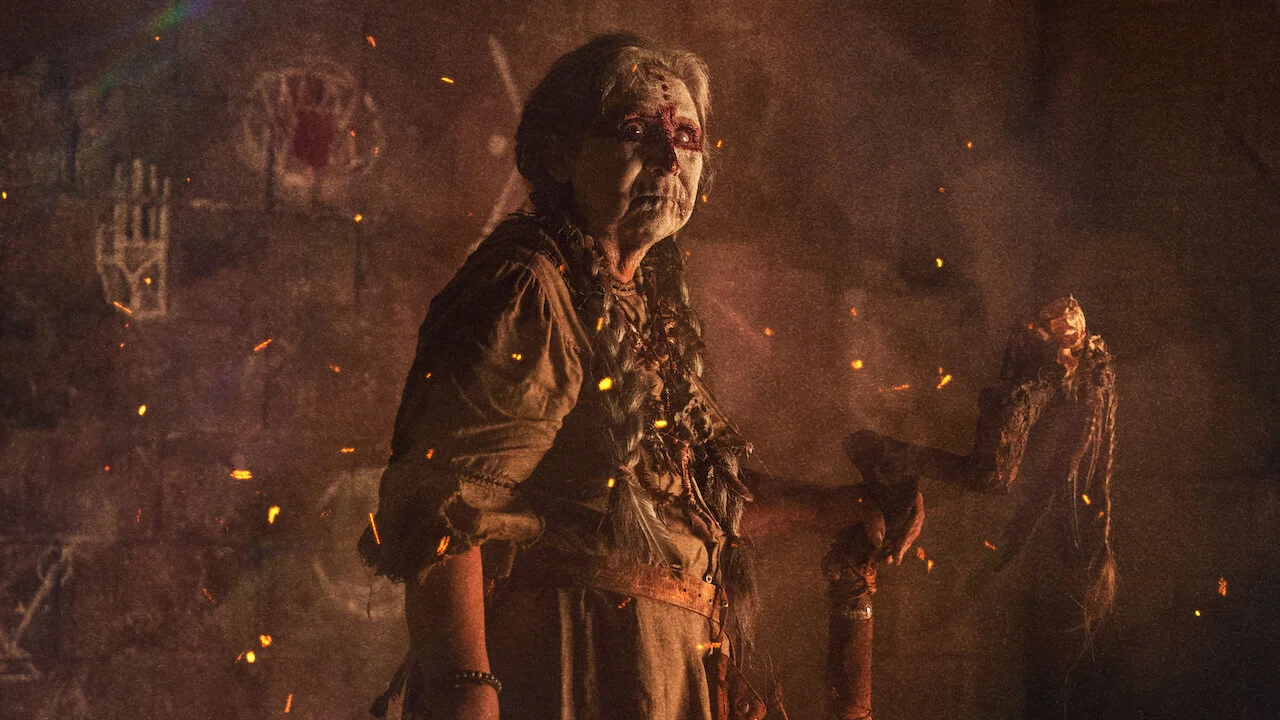Halloween Horror: Resolution (2012)
Justin Benson and Aaron Scott Moorhead’s ultra low-budget horror film Resolution bears more than a passing resemblance to Drew Goddard and Joss Whedon’s The Cabin in the Woods. Both films came out in 2012 and deal with horror tropes through a meta narrative that comments on horror filmmaking itself. I lauded the inventive fun of The Cabin in the Woods back in 2012, but I’ve soured on the film’s snarky approach to genre over the years. So while Resolution lacks the genre thrills and witty humour of The Cabin in the Woods—and not to mention the Hollywood budget—I have a greater appreciation for its low-key, quiet, earnest approach to genre when compared to its showier counterpart. Resolution doesn’t want you to laugh at horror because you’re smarter than it. It wants you to sympathize with the kinds of people that are fodder for the threats at the centre of horror stories.
Most of Resolution is an extremely slow-burn drama. The button-down Michael (Peter Cilella) receives a video of his junkie buddy Chris (Vinny Curran) making a fool of himself in a rundown house in the woods. Chris is addicted to meth and Michael wants to try one more time to help him get clean. He goes to meet Chris at the rundown home in which he’s squatting, and after he’s unable to convince Chris to give up the meth, he handcuffs him to some rebar, forcing the issue. He then hunkers down with his friend for seven days, after which he plans to offer a sober Chris one last chance at rehab.
As can be expected from this narrative set-up, much of Resolution consists of conversations between Michael and Chris. They argue, they reminisce, they talk about life choices—Benson and Moorhead work hard to replicate the character-focused patterns of independent American cinema and it shows. The film even has the visually-quiet, handheld digital approach that’s a formal cornerstone of American indie film, especially anything from the so-called mumblecore movement. Unlike so many horror films, Resolution invests in character and it pays off, as we get to know the quirks, fears, and shared histories of these characters. An argument over what it means to be a good person, and whether looking out for your friends is a selfish act or not, speaks to the specificity of the central relationship that grounds the film.
But character is not the only interest here. As the days pass, Michael starts to find curious objects in and around the home. He discovers some old notebooks from French researchers who were apparently on the site in the past, as well as mysterious vinyl records and old photos detailing strange happenings. Chris explains that a lot of weird people come out here to get lost, but even he starts to grow curious when the detritus that Michael keeps finding starts to contain facts about their own situation. Eventually, they come across film strips that have images of themselves on them, and worry that they’re the victims of some unknown master plot. These happenings are more creepy than scary, creating a paranoid atmosphere but never shocking the viewer outright.
From here on out, Resolution slips frequently to the perspective of the meta narrative, as an unseen presence seems to be interfering with Michael and Chris to produce some kind of unknown outcome. It’s no secret that we’re meant to associate the unseen presence with the directors of the film. Benson and Moorhead add the occasional celluloid burn marks to the frame whenever the narrative shifts, as if an invisible editor has spliced a new tangent onto the plot of Michael and Chris’s lives. The narrative elements of mysterious DVDs, film strips, and laptop recordings also constantly reflects back upon the process of filmmaking.
The meta elements of Resolution are modest compared to something like The Cabin in the Woods, but they are clever and inventive ways to add a high-concept to a low-budget production. Furthermore, by wedding the meta elements with the intimate character drama, Benson and Moorhead force us to contemplate the people at the centre of so many horror narratives. The film asks us: why do we enjoy watching people like Michael and Chris suffer and die on screen? Is bloodshed the only catharsis moviegoers are looking for?
By the time the characters tearfully reconcile in the closing moments of the film, a resolution which seems unsatisfactory to the unseen presence haunting them, it’s clear what Benson and Moorhead’s own answer to that question is. In horror, there is only one kind of resolution that matters and it always involves blood. But we don’t want that to be the case in this instance, as the specificity of the storytelling and the strength of the performances has made us care for these individual men and invest in their growth. We’ve spent an hour and a half hoping for Chris to overcome his meth addiction and for his friendship with Michael to flourish. But we’re also cued to expect something dreadful and exciting to happen in a horror feature, usually at the expense of the characters.
Resolution mines this contradictory tension, between what we expect of a horror film and what we want for sympathetic characters, to good effect. The approach is not groundbreaking and the effect is ultimately modest, but there’s a charm to a small, well-executed film with enough ingenuity to hold our attention in spite of its lack of conventional thrills.
7 out of 10
Resolution (2012, USA)
Directed by Justin Benson and Aaron Scott Moorhead; written by Justin Benson; starring Peter Ciella, Vinny Curran, Zahn McClarnon, Bill Oberst Jr.



Kiyoshi Kurosawa’s horror drama is a quiet film with a haunting effect that’s as disturbing as anything you’ll find in horror cinema.